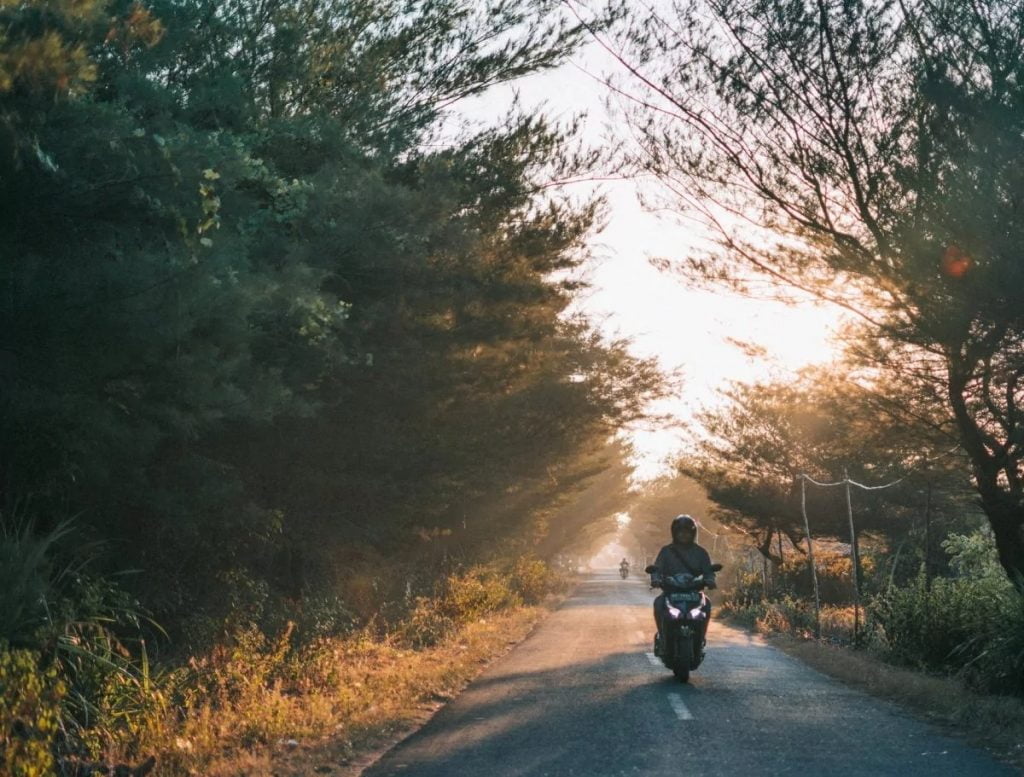Riding a motorcycle is a liberating experience, but it’s also a risky one. With warm summer days, you feel the urge to head out on the highway. But even for experienced riders, it’s important to remember the basics. Safety on the road doesn’t just help protect your body, it can also help protect your wallet by keeping your insurance rates low.
So keep the following tips in mind as you prepare to head out on the open road.
The clothes make the rider
With nothing standing between you and the pavement except the clothes on your back, it’s important for you to pick quality gear that will protect you in the event of an accident.
First and most importantly is the helmet. Wearing a helmet is the law, but you shouldn’t think about it as just satisfying a legal obligation, this is the piece of gear that is going to keep you alive. There are many kinds of helmets out there, including full face, flip-ups, open face, and the good ol’ fashion brain bucket, all of which are acceptable as long as they meet CSA CAN3-D230-M85 standards (the label will say). What kind you want will depend on what kind of riding you’re doing and your personal style, but generally speaking, full face helmets are the safest. We know they might clash with the classic chopper look, but if you plan on hitting highway speeds on your bike, you’ll want a full face helmet to protect your money maker should anything happen.
Keeping your head safe is just the start, you also need to keep your wits about you as you ride – and that means keeping your eyes open. If you’re not wearing a full face helmet, you need a set of riding goggles or glasses to protect your vision (from both debris and glare). There are several different options in this space, from the $15 wraparounds that are basically glorified windscreens for your face, to impact resistant, UV blocking, specialty riding shades. Basically anything is better than nothing, but considering how important your vision is on the road, invest in a good set. For those of us wearing prescription glasses, don’t worry, there are plenty of models out there designed to go over typical glasses (and without looking like the old Grandma visor from the ’80s!).
Next step is to protect your flesh. Again, this is going to depend on your style and choice of ride. From full-padded leathers with the internal knee pads, to the classic Perfecto jacket, make sure you have something thick and reliable between you and road rash. Good boots are also a must, not just to protect you during a crash, but to withstand the heat coming off a roaring engine. Seriously, don’t be that guy on his bike in shorts and melting pair of tennis shoes!
Finally, dress to impress. No, I’m serious, STAND OUT. You want to be visible on your bike not just because – let’s face it – you want to look cool but because it will help other drivers notice you. So get that flashy jacket you’ve had your eye on, the helmet with the cool design, hell, put more chrome detailing on your bike – after all, safety first!
Practice good habits
You should always be practicing good habits on the road, but on a bike the stakes are even higher. There is no seat belt or airbag to save you on a bike, so keeping an eye out for danger is your best line of defence.
Keep your distance from other vehicles, especially those in front of you. You don’t want to be tailgating one second and sitting in their back seat the next.
Always have your lights on. Just as we were saying with dressing to stand out, you want your bike to attract attention. Anything that helps you get noticed is a good thing. Remember that bikes are smaller than other vehicles and are easy to lose in blind spots, so you need to be extra mindful not to trail behind other vehicles where they might not notice you. Get alongside, ahead, or fully behind a vehicle, never linger on a diagonal.
Check the forecast before you go out. Rain might not be a big deal when you’re driving a car or truck, but it can make a big difference when you’re rolling around on two wheels. If the road is slick, it’s time to call it a day. Same goes for trying to ride in an active rain storm. While there are some (somewhat goofy) secondary market wiper attachments for visor helmets, chances are you won’t have one. Don’t ride when you can’t see, just pull into the nearest coffee shop or rest stop and wait it out.

If you’re a new driver
Is this your first summer hitting the road? Then invest in a bike safety course. Yes, it may be cheaper to learn from a friend or relative who has experience, but statistically, professionally-trained riders are safer riders. This is your life we’re talking about, so it’s worth the extra effort, but as an added bonus trained riders can expect to save on their motorcycle insurance. A good incentive for a good idea.
When you’re just starting out, take the time to get used to riding and how it feels. Ramp up gradually to higher speeds only after you’ve got a sense for how your bike handles and responds on the road. This means no highway driving for the first while, and no passengers. It’s natural to want to show off a bit and take someone for a ride, but you don’t want to immediately spill out on the pavement because you’re not used to the added weight and balance of a passenger.
Lastly, if this is your first bike, buy a cheap one. This might sound counter-intuitive since a lot of our other advice says to go for quality over affordability, but generally, the cheaper the bike, the smaller the engine and the smaller the insurance premium. Besides, the less expensive the bike, the more common spare parts will be for it and the cheaper the repairs. No sense getting an extremely pricey bike as your first ride when you’re at your most likely to damage it. Ride cheap this summer, get some experience under your belt, and maybe think about upgrading next spring.
Need motorcycle insurance? Of course we can help. Contact a Staebler Broker to discuss what you need and the options available to you.










0 Comments